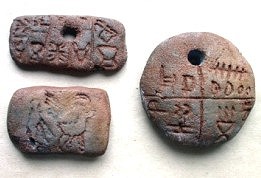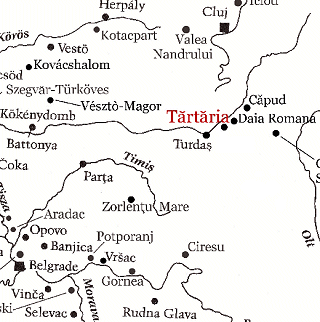

Did the Neolithic and Eneolithic south-eastern Europe develop a system of writing? Did the Danube Script predated similar evolutionary trends in Mesopotamia and in Egypt by almost a millennium? From almost half a century, the group of the three inscribed Tărtăria tablets and their script-like signs are the focal point for the fierce debate regarding both the spatial and temporal incubators of writing and the chronology and location of the cradle regions of civilization in Europe. Although evidence of same and similar signs had been known since the late 19th century excavation at the important Neolithic site of Turdaş (in Romanian, Tordos in Hungarian) [2] in Transylvania, it was the discovery in 1961 of three inscribed tablets at the nearby settlement of Tărtăria that kindled a wave of controversy regarding the possibility that writing in the Danube basin predated the earliest Sumerian cuneiform and Egyptian hieroglyphics. Tărtăria is a rural village of 5,000 inhabitants (Alba county). It is in the Western area of Romania famous in roman times for its gold mines. The prehistoric settlement of Tărtăria-Gura Luncii is not very far from the copper and gold deposits of Zlatna region and some 18-20 kilometres from two important Neolithic settlements: Turdaş and Alba Iulia-Lumea Noua. The imposing prehistoric settlement lays on a terrace around 20 meters high on the Mures river and it is oriented E-W. The mound is 300-350 meters long and 150 wide.  Paradoxically, Tărtăria discovery cracked the scepticism of some scholars over the spectacular claim that the Danube Civilization used an early form of writing and at the same time reinforced that of the others. In fact, since their discovery Tărtăria tablets have occupied a unique and often contentious position in European prehistory because of the dispute about their dating and the assertion that their symbols could express a form of writing.[3]
Paradoxically, Tărtăria discovery cracked the scepticism of some scholars over the spectacular claim that the Danube Civilization used an early form of writing and at the same time reinforced that of the others. In fact, since their discovery Tărtăria tablets have occupied a unique and often contentious position in European prehistory because of the dispute about their dating and the assertion that their symbols could express a form of writing.[3] Regarding their dating, the item of the present article, the archaeological documentation is unsure. Therefore they have been used by some scholars [4] as evidence for a low chronology for the Danube Neolithic: the Tărtăria tablets might belong to the Vinča C migrations, when such a "writing" system was largely used not only in the south-east Europe, but also in the area of proto-Sumerian civilizations. [5] At the some time the Transylvanian tablets have been considered by others scholars as genuine Early Vinča artefacts of the fifth millennium B.C. [6] or of the latter half of the sixth millennium B.C. [7] Therefore they have been taken into account as the earliest attestations to an old European script. [8] In these days the controversy seems to be completely stack. But what really happened at Tărtăria?  | |
Merlini Tărtăria | 1 | 2 | 3 | 4 | 5 | 6 | 7 | 8 | 9 | 10 | 11 | 12 | 13 | 14 | 15 | |